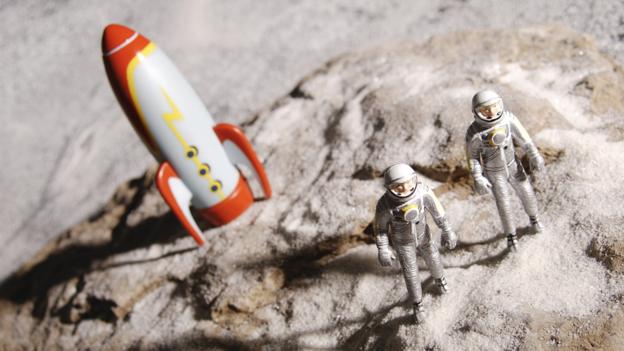
(Thinkstock)
We’ve landed on a comet – so where next? David Robson rounds up five of the strangest space missions that are already on the cards.
The landing of the Philae Lander – on a comet travelling at 135,000km/h (84,000mph) – has been hailed as the start of a new chapter in space exploration. It will take many years to get to grips with the discoveries it is making, but in the meantime space scientists will be asking the inevitable question: what next? Here, BBC Future rounds up some of the five most exotic missions being dreamed up by space agencies – including plans to catch an asteroid, sink a sub under the ice of one of Jupiter’s moons and even the prospect of travelling to a distant star.
Floating in the clouds of Venus
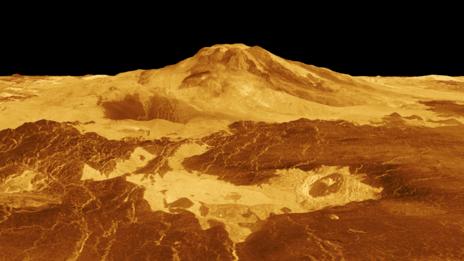
Probes have already given us glimpses of Venus - but could astronauts explore it in more depth? (Nasa)
Venus is often described as the Earth’s evil twin – it is the same size as our home planet but contains a toxic atmosphere that rains acid from the skies. Nevertheless, Geoffrey Landis and a team at Nasa have investigated the possibility of sending astronauts into orbit around the planet to operate remote-controlled rovers on the surface. Landis’s vision doesn’t stop there: he thinks humans could even live in balloons in the upper reaches of its atmosphere, above its poisonous clouds. There, the air pressure and temperature is very similar to that on the Earth’s surface – so it should be possible to maintain comfortable conditions inside the balloon while it floats effortlessly, without fuel.
Sailing Titan’s seas
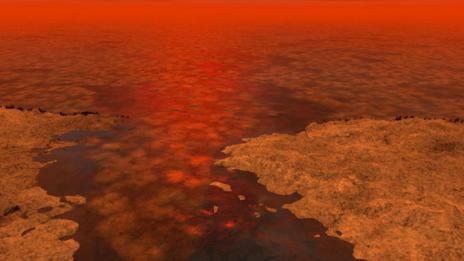
The seas on Titan are thought to contain floes of hydrocarbons - could they be harbouring simple life? (Nasa)
Titan has a weather system very similar to Earth’s – except it is methane that collects in clouds, before raining down to form lakes and seas on the surface. Two missions have been proposed to land a boat on one of those extra-terrestrial seas – one proposed by Nasa and one by the European Planetary Science Congress. Needless to say, the hurdles are huge – the thick clouds preclude the use of solar power so they would need to use nuclear fuel. And navigation through the viscous seas would require an innovative form of propulsion, perhaps in the form of a screw drilling through the liquid. Unfortunately, Nasa has put the brakes on its mission and the EPSC’s plans are still in their infancy.
Crawling under Europa’s ice
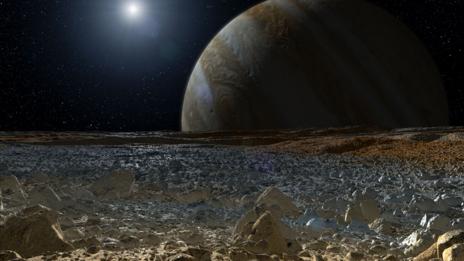
(Nasa)
Perhaps a more promising target lies under the icy shell of Europa, Jupiter’s moon. In these far reaches of the Solar System, the Sun offers very little heat – but warm water might flow under the ice, heated by tectonic activity. To get there would require a “cryobot” capable of melting its way through a few kilometres of ice. Nasa’s current design, called Valkyrie, works by heating water with a nuclear power source and squirting it onto the ice. As it melts, Valkyrie collects the run-off to continue the process. A small prototype, tested this year in Alaska, was found capable of powering its way through 8km (five miles) of ice a year, and the project is receiving some serious funding for further development. If it succeeds, it may offer us the first glimpses of ET: those warm oceans could be incubating alien life.
Catching an asteroid
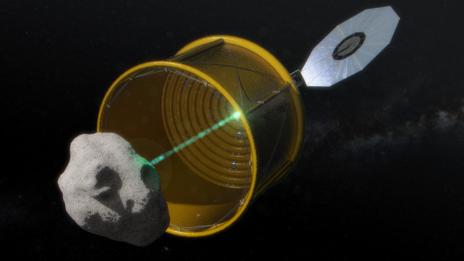
(Nasa)
If the task of landing on a comet was ambitious, Nasa’s “Asteroid Redirect Mission” is positively absurd. The plan is to identify, capture, and move an asteroid into orbit around our Moon, where astronauts can reach it to obtain samples. Like the Philae mission, analysing these space rocks would give us new insights on the origins of the solar system – while helping to develop technology that could potentially deflect an asteroid heading for Earth, should we ever face that particular Armageddon. So far, Nasa says it has six asteroids under scrutiny as possible targets. How to catch the asteroid hasn’t been decided yet, but possibilities includeenveloping it in an inflatable bag. If all goes to plan, Nasa predicts that astronauts could be exploring the rock within 15 years.
Interstellar travel

(Thinkstock)
Never mind Jupiter’s moons or far-flung asteroids. How about a trip toAlpha Centauri? People born today may witness this giant leap for humankind within their lifetime, if the 100 Year Starship project has its way. A joint venture between Nasa and the US Defense Advanced Research Projects Agency (Darpa), 100YSS aims to create a framework that will allow humans to travel to another star within the next hundred years. They are considering every possible mechanism at the moment – including hypothetical anti-matter propulsion – as well as strategies to overcome the ravages of space travel on the human body. Admittedly, the chances of it working seem infinitesimal, given today’s science. But 150 years ago, Jules Verne’s visions of a moon landing must have seemed outlandish; at that time, humans hadn’t even flown in a plane. Christopher Nolan’s latest film may not be so far-fetched after all.
No comments:
Post a Comment